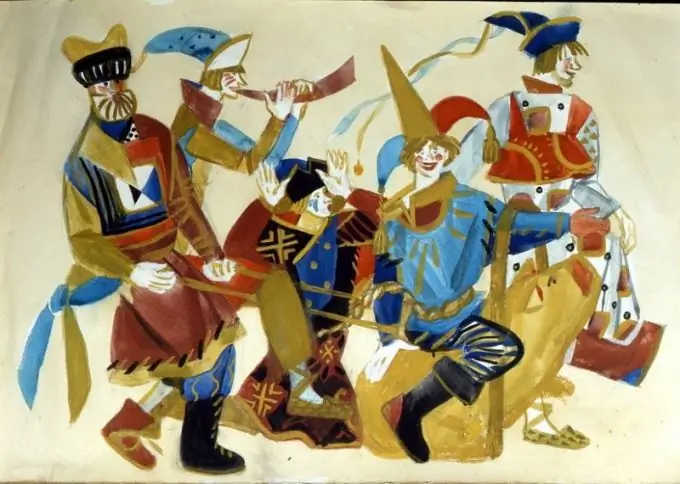- Author Antonio Harrison [email protected].
- Public 2023-12-16 07:44.
- Last modified 2025-01-22 21:44.
Skomorokhs appeared in Russia no later than the 11th century, but representatives of this profession gained particular popularity only in the 15th-17th centuries. The history of this name itself is unknown, but most often there are suggestions that it comes from the Greek or Arabic version of the word "jester" or "master of the joke".

Who were the buffoons
Wandering artists were called buffoons in Russia. As a rule, they had many talents, and therefore could sing songs, tell funny stories, perform various scenes, show acrobatic numbers, play musical instruments, train animals and show performances with their participation. Most often, they used their skills to amuse the audience at fairs, games, festivities or celebrations.
Each buffoon was primarily a bearer of folklore traditions. Representatives of this profession knew many folk songs, epics, ditties, fairy tales, proverbs, sayings, moreover, they constantly learned new ones and used them during performances in different cities and villages, "transferring" and thereby strengthening folk traditions. Very often, during their performances, buffoons turned to the public and even asked people to participate in scenes or tricks, or made fun of passers-by.
What did the buffoons do
The main occupation of buffoons was not only organizing entertainment for the public, but also ridiculing officials, clergy and upper classes. They came up with hot jokes, acted out scenes with puppet characters in which it was easy to recognize their prototypes, and also used the genre of social satire. For satirical performances - mockery - they chose special clothes and masks, as well as musical instruments with which they enhanced the comic of the performance.
Of course, parodies and satire, often used by buffoons, did not delight either the clergy or the authorities at all. Artists were attacked, raided, banned, and severely persecuted. In the end, Archbishop Nikon even managed to achieve a complete ban on the performances of buffoons.
The buffoons were not only engaged in street performances. Since they were connoisseurs of folklore traditions, they were often invited to weddings, where representatives of this profession entertained guests with tricks and funny scenes without satire, and also gave recommendations on the conduct of pagan wedding ceremonies and participated in them themselves. Moreover, the buffoons knew both funeral rites and traditions, so they often resorted to their help when the time came to say goodbye to a deceased person and see him off on his last journey.

